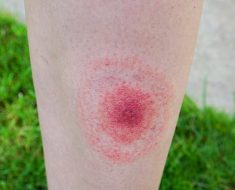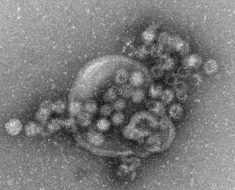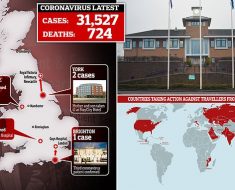The coronavirus disease 2019 (COVID-19) pandemic caused by the severe acute respiratory syndrome coronavirus 2 (SARS-CoV-2) is the world’s third major coronavirus outbreak. To date, the SARS-CoV-2 has infected over 135 million lives and caused over 2.9 million deaths.
Even as vaccines against SARS-CoV-2 are being developed and administered at an unprecedented pace, treating this infection remains a challenge.
To address this, researchers from China have used nanobodies (Nb) as a possible therapeutic approach. In a recent paper, published in the journal MedComm, they reported Nb phage display libraries derived from four camels immunized with the SARS-CoV-2 spike RBD.
.jpg)
Among the Nbs candidates identified to recognize SARS-CoV-2-RBD, the researchers presented Nb11-59 – with the highest activity – a promising prophylactic and therapeutic molecule against SARS-CoV-2, especially through inhalation delivery.
The spike (S) glycoprotein homotrimer on the SARS-CoV-2 plays a pivotal role in viral entry. The spike's receptor-binding domain (RBD) binds to the host receptor human angiotensin-converting enzyme 2 (ACE2). The key events in the viral hijack and merging of the viral envelope with the host membranes include 1) receptor binding, 2) proteolytic processing, and 3) structural rearrangement of S protein.
The heavy-chain-only antibodies (HCAbs) isolated from camels are alternatives to therapeutic antibodies. The HCAbs consist of only two heavy chains without light chains. It contains a single variable domain (VHH), a single-domain antibody – also known as the nanobody (Nb). Nbs have similar affinities and specificities for antigens like traditional antibodies.
However, Nbs are smaller in size, with higher stability. Thus, the Nbs can be easily nebulized and delivered directly to the lungs via an inhaler. This approach for developing neutralizing antibodies to targeting SARS-CoV-2 is focused on in this study.
Because of lacking Fc domain, Nbs or VHHs represent ideal neutralizing antibodies against viral infections.”
In this study, the researchers used the SARS-CoV-2 strain IVCAS 6.7512, offered by the National VirusResource, Wuhan Institute of Virology, Chinese Academy of Science. They obtained the coding sequence of SARS-CoV-2 spike RBD from the UniProt website (https://www.uniprot.org/). The researchers constructed the phage display library; they used the phage display technology to perform Nbs biopanning.
The researchers identified Nbs specific to SARS-CoV-2 spike RBD. Here, they reported that of the 381 Nbs they identified, 229 Nbs bind to all the eight mutants and the remaining Nbs bound to at least one mutant. They demonstrated that this Nbs library could be a valuable screening resource for effective diagnostic and therapeutic reagents for COVID-19.
Further, they identified and characterized Nbs with SARS-CoV-2-RBD/ACE2 blocking activity; selecting seven Nbs out of all the candidates. The researchers then chose these seven Nbs, that represented excellent binding capacity to RBD and outstanding ability to block infection, to conduct a comprehensive functional study on SARS-CoV-2-RBD or different RBD mutants.
Because the coronavirus may re-arise frequently in the next few decades, posing a serious threat across the world, the researchers saw the need to find anti-coronavirus drugs with broad-spectrum neutralizing activity. Therefore, they analyzed the neutralizing activity of the seven Nbs for other closely related beta-coronaviruses species, bat-SL-CoV-WIV-RBD and SARS-CoV-2-RBD. They observed two Nbs, Nb11-59 and Nb16-68, demonstrated neutralizing potency against both species.
These two Nbs, Nb16‐68 and Nb11‐59, also exhibited potent neutralizing activities against authentic SARS‐CoV‐2 – proving to be novel potent candidates for COVID-19 treatment.
Since Nb11-59 exhibited the best neutralization activity toward authentic SARS-CoV-2 with a 50% neutralizing dose (ND50) of 0.55 μg/ml, the researchers selected this for further studies. Nb11-59 was humanized and expressed in Pichia pastoris (a yeast) through fermentation. They reported large-scale production with 20 g/L titers and 99.36% purity. The researchers claimed that this is the highest expression of Nbs among the yield that has been reported so far. Thus, it can be rapidly and widely used as a preventive or therapeutic molecule.
The results demonstrated that we have creatively developed the first Nb against SARS-CoV-2 with the inhale delivery potential.”
The researchers showed greater drug stability and indicated that nebulization under formulation conditions did not significantly undermine its stability.
In this study, the researchers suggest that the RBD-specific Nbs collection could be very valuable in the development of diagnostic and therapeutic reagents for COVID-19. They suggested SARS-CoV-2 virus fast-tracking techniques with Nbs and Nbs as PET-CT probes.
The researchers here identified a potently neutralizing molecule of Nb11-59, which recognizes not only the wild-type but also eight mutants of RBD proteins. They elaborated the efficacy of this molecule, along with a review of current therapeutic options for SARS-CoV-2 infection and COVID-19.
Nb11-59, as a single domain antibody with small size, could be delivered to the site of infection via inhalation, supported by its high stability ranging from 4 deg C to 40 deg C, and its consistent post-nebulization stability profile, which is likely to highly effective to control SARS-CoV-2.
- Gai, J, Ma, L, Li, G, et al. A potent neutralizing nanobody against SARS‐CoV‐2 with inhaled delivery potential. MedComm. 2021; 2: 101– 113. https://doi.org/10.1002/mco2.60, https://onlinelibrary.wiley.com/doi/10.1002/mco2.60
Posted in: Medical Science News | Medical Research News | Miscellaneous News | Disease/Infection News | Healthcare News
Tags: ACE2, Angiotensin, Angiotensin-Converting Enzyme 2, Antibodies, Antibody, Camelid, Coronavirus, Coronavirus Disease COVID-19, CT, Diagnostic, Drugs, Efficacy, Enzyme, Fermentation, Glycoprotein, Lungs, Molecule, Nanobodies, Pandemic, Protein, Reagents, Receptor, Respiratory, SARS, SARS-CoV-2, Severe Acute Respiratory, Severe Acute Respiratory Syndrome, Syndrome, Virology, Virus, Yeast

Written by
Dr. Ramya Dwivedi
Ramya has a Ph.D. in Biotechnology from the National Chemical Laboratories (CSIR-NCL), in Pune. Her work consisted of functionalizing nanoparticles with different molecules of biological interest, studying the reaction system and establishing useful applications.
Source: Read Full Article





